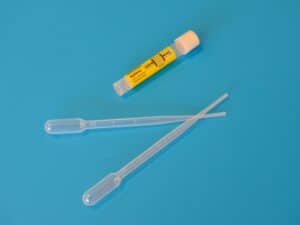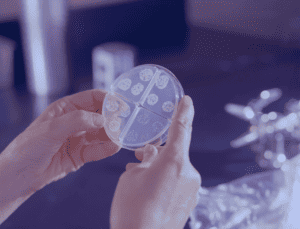Blood tests
Blood tests are widely-used methods to diagnose and confirm infections.
In general, most laboratory tests (or assays) try to identify:
- Antigen: An antigen is anything that triggers our immune response. For infectious diseases, antigen tests look for the disease-causing agent (pathogen)
- Antibodies: Specific antibodies generated by our bodies in response to the infection. Tests to detect antibodies in blood are also known as antibody serology tests.
The most commonly-used blood tests are:
CBC (Complete Blood Count)
A CBC test measures blood cells in your body. A report usually provides a count of red blood cells (RBCs), white blood cells (WBCs), and platelets. The test is a fast and cost-effective screening test.
When the blood count in a CBC is higher or lower than the norm, it can indicate infection and even help identify specific diseases—for example, viral infections like dengue lower platelet counts. Platelets play an essential role in blood clotting; a low platelet count increases the risk of bleeding. In severe cases, a low platelet count can lead to dengue hemorrhagic fever (DHF), which can be fatal without timely medical intervention. Monitoring platelet counts at regular intervals is critical to managing treatment.
The CBC is often the first step in a series of diagnostic tests to confirm an infection. This is because white blood cell counts can be high due to many different bacterial, viral, or fungal infections. However, even auto-immune disorders like rheumatoid arthritis, certain cancers, and even inflammation can raise WBC levels.
Blood culture tests
A blood culture test checks for bacterial and fungal infections. While a CBC offers information on our blood cell count, a blood culture test can identify the presence of specific bacteria or fungi in the blood. A healthcare provider may request a blood culture test if they suspect an infection in the blood.
To run the test, a small blood sample is mixed with specific nutrients that help microbes grow to run the test. This mix is kept aside for a few days until the quantity of bacteria or fungi in the blood is large enough to identify the pathogen. Blood culture tests are important because they help medical professionals decide on the antibiotics needed for treatment.
Blood culture tests are the gold standard in diagnosing bacterial and fungal infections in the blood. They are widely used, and it only takes a few days to receive test results.
Polymerase chain reaction (PCR) or NAAT (Nucleic acid amplification test)
PCR is a molecular test that detects DNA or RNA from biological samples. The PCR amplifies genetic material in blood, saliva, nasal swabs, or tissue samples. Medical professionals use the PCR to diagnose viral, bacterial, and parasitic infections.
The PCR test is a game changer in infectious disease testing. In 1993, the inventor Kary B. Mullis even received a Nobel Prize in Chemistry for his invention. The test can generate millions of copies of DNA or RNA from even very small samples. It is highly sensitive and offers fast and accurate results, so it is a standard test to identify the presence of specific pathogens.





